
The Roman theatre at Miletos (Source)
By Sam Topalidis (2025)
Pontic Historian and Ethnologist
Introduction
The now deserted settlement of ancient Miletos is located at the mouth of the Maeander River, 9 km from the Aegean Sea on the west coast of Türkiye, 81 km south of Ephesus (Fig. 1). Miletos was attractive to settlers due to its location on an approximately 250 km2 peninsula and its natural protection against invaders from the hinterland by the mountains to the south-east (Brückner et al. 2014:54).
Its ruins reveal a mixture of Greco-Roman, Eastern Roman (Byzantine) and Turkish structures (turkisharchaeonews.net/site/miletus). Before 500 BC, Miletos was the most important Greek settlement in Anatolia. In the 6th century BC, it was important in founding the Greek colony of Naukratis in Egypt and from the 7th century BC, many of the Greek colonies on the shores of the Black Sea, including Pontos (north-east Anatolia, Fig. 2). In addition to its commerce and colonisation, Miletos was distinguished by its scientific-philosophical figures (www.britannica.com/place/Miletus).
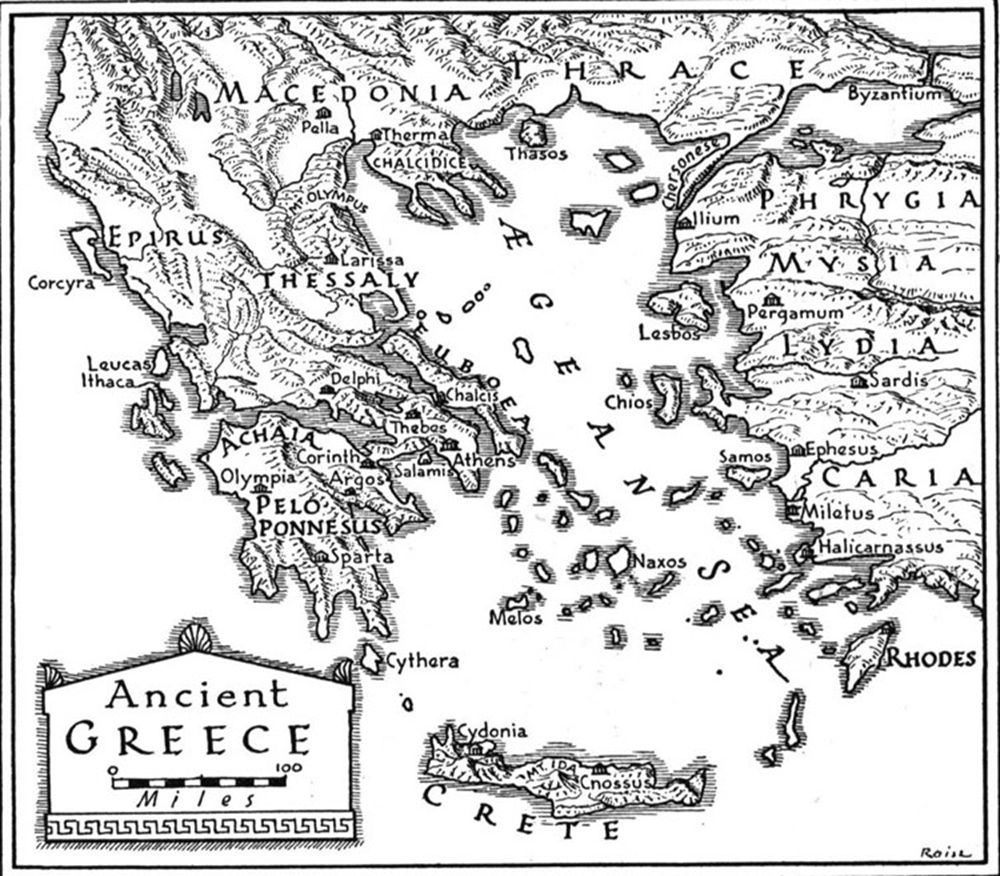
Fig. 1: Greece and the west coast of Anatolia (www.greeka.com/greece-maps/ancient-map/)
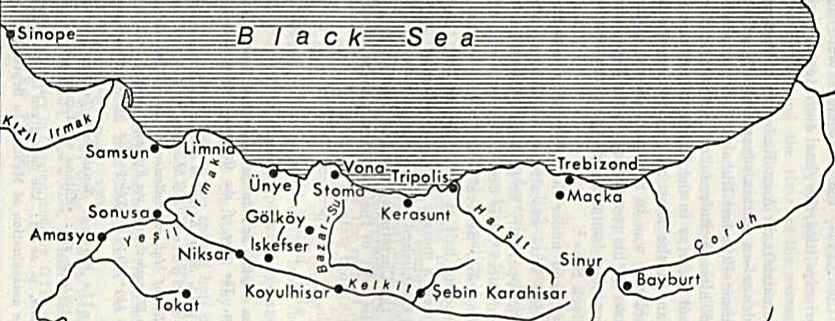
Fig. 2: North-east Anatolia (Pontos) (Amasya to Trebizond = 330 km, Zachariadou 1979:335)
Early History of Miletos
The oldest recorded human activity around Miletos comes from 3500–3000 BC. Settlers from the Cycladic Islands in the Aegean Sea settled in Miletos c.3000–2000 BC. By c.1900 BC, the Minoans from Crete had founded a trading colony at Miletos—there were indigenous people living there. In the period 1475–1415 BC, Minoan Miletos became Mycenaean (Note 1)—but the change was not traumatic. (Sometime between 1319 and 1295 BC Miletos was destroyed by the Hittites from the north-central Anatolian plateau (Bryce 2023).) Later, after the raids of the so-called ‘Sea Peoples’ (Note 2), Miletos fell under the domain of the Carians to the east (Fig. 1) (c.1180–1050 BC) and Greek settlers from the Greek mainland in the late 11th and the early 10th centuries BC (Brückner et al. (2014); turkisharchaeonews.net/site/miletus).
The Black Sea had now become part of the greater Mediterranean and was contributing to the flow of bronze and other metals (Sherratt 2022). (Details on the colonisation of the Black Sea follow.)
In c.615 BC, the aristocracy was overthrown in Miletos. In 546 BC, Miletos came under Persian control (turkisharchaeonews.net/site/miletus). In 513 BC, soldiers from Miletos participated in the Scythian expedition (northern Black sea area) of the Persian king. After Miletos failed to occupy the island of Naxos for the Persians, Miletos initiated the Ionian Revolt against Persia together with people from Anatolia, Thrace and Cyprus. The Persians defeated the Milesians in the naval battle of Lade (494 BC) which ended the revolt. The Persians then destroyed Miletos and killed most of the male citizens and sold some of the women and children into slavery (www.fhw.gr/choros/miletus/en/proistoria.php?menu_id=1).
In 479 BC, a crew of Milesians took part with the Persians in the naval battle of Mycale where the Persians were defeated by the allied Greek navy. However, the Milesians defected and the Persians subsequently invaded Miletos. Miletos was rebuilt and joined the Athenian-led Delian League (founded in 478 BC) against Persian aggression. After 404 BC, Miletos came again under Persian control. It later came under the control of nearby Caria (377–353 BC). In 334 BC, Miletos was a fortified Persian defence which was captured by Alexander the Great (www.fhw.gr/choros/miletus/en/klasiki.php?menu_id=4). Alexander took around 300 Greek mercenaries who were serving Miletos into his own army (Arrian, Book 1.19–20).
Harbours
The Lion harbour was Miletos’ most prominent harbour during antiquity (Fig. 3). Its significance was as a closable war harbour. The commercial relevance of the Lion harbour, however, was limited. Miletos had a series of other harbours that fulfilled this function: the Theatre harbour, the Humeitepe harbour and the Eastern harbour. Finally, there were the minor harbours of Athena and Kalabak Tepe (Brückner et al. 2014:49–50, 74).
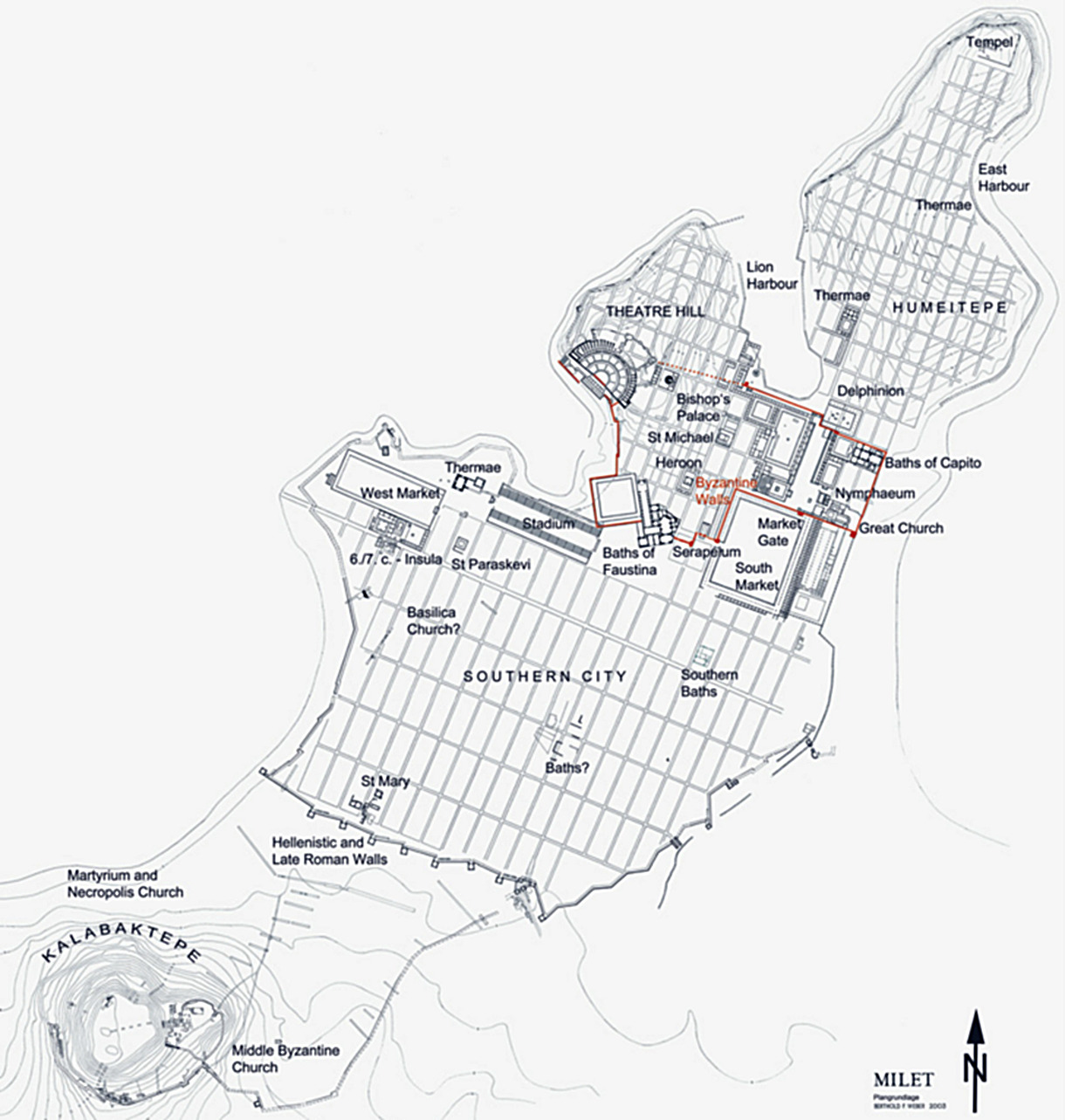
Fig. 3: Early Eastern Roman (Byzantine) Miletos (Niewöhner 2016:69)
Greek Colonisation of the Black Sea
Greek contact with local people in the Black Sea area occurred before Greek colonisation. Archaeological evidence does not prove any Greek settlement in the southern Black Sea littoral before the last third of the 7th century BC (Manoledakis 2022:294, 297).
An example of forced migration is Ionia (on the west coast of Anatolia), a wealthy region of which Miletos was the main city. From the second half of the 7th century BC, neighbouring Lydia gradually invaded Ionian territory; this was when Ionia sent out its first colonies. Then, from the middle of the 6th century BC, the Persian empire began to conquer Ionian territory. In Miletos, there was a shortage of land which created a shortage of food and external difficulties provoked internal tensions (Tsetskhladze 2006:xxx).
In the Black Sea, Miletos helped to establish probably less than 50 colonies. According to Greaves (2007) early Greek colonies were located for defensive reasons, good ports, access to land for cultivation, close to mineral reserves or were positioned to take advantage of fish runs. Manoledakis (2022) believes that the reason for undertaking colonisation was primarily economic.
Southern Black Sea Coast
Sinope may have been the earliest site at which Miletos established a Greek colony (succeeding earlier settlements) in the 7th century BC. The Milesians may have been the first Greeks to have inhabited Sinope. Some of the other Greek colonies in Pontos included: Amisos (Samsun), founded by Miletos or by Miletos and Phocaea, probably in the first half of the 6th century BC (Manoledakis 2022:316, 321), Tripolis (colonised by Greeks after 400 BC), Unye (colonised by Greeks in 5th–4th century BC, at the earliest), Surmene (east of Trabzon), Ophis (east of Surmene) and Rize (east of Ophis). The last three settlements were colonised by Greeks after Trabzon was colonised.
The Greek colonies of Kotyora (Ordu), Kerasous (Giresun) and Trabzon were established by Sinope probably sometime in the 6th century BC (Tsetskhladze 2009a).
It appears that in the mid-4th century BC, there were more than 30 Greek settlements on the southern Black Sea coast (Manoledakis 2021). Other Ionian centres also took part in this colonisation. The Greek colonies along the southern Black Sea coast (Fig. 2) were hindered by the local geography and the hostility of the local indigenous people (Tsetskhladze 2006). Manoledakis (2022) lists 103 settlements from ancient sources on the southern Black Sea littoral during the 1st millennium BC.
Each Greek colony in the Black Sea probably started with at least several hundred settlers and maybe a supply of soldiers for security. They probably received acceptance from the local population to establish a colony because it was beneficial to the locals. We would expect that the colonists arrived after winter when they could cultivate land and having brought many months’ supply of food. The first colonists of the Black Sea who left Miletos and other centres were probably overwhelmingly men who were underprivileged. After the colony was established more women and men probably followed from Miletos and other Greek centres while local women would have also married Greek men in the colony. Manoledakis (2018) correctly states that the Greek colonists would have brought items which they could trade, or use to make items to trade with the local population.
Colchis
In c.610–570 BC, Dioskurias (Sohoumi), Gyenos, Phasis and Batumi in Colchis (western Georgia) were founded by colonisers from Miletos and were probably mixed Hellenic and local native settlements (Avram et al. (2004); Tsetskhladze (2019)).
Strabo, in the 1st century AD wrote that Colchis’ wealth was derived from its gold, silver, iron and copper. It also had timber and linen.
The well-known tale of Jason and the Argonauts who sailed from Greece to Colchis in search of the Golden Fleece had been told well before it was recorded by Apollonius Rhodius in the 3rd century BC (Tsetskhladze 2006). Before the time of Homer, the basic core of stories about the Argonauts already existed (Lordkipanidze 2002). The tale of Jason and the Golden Fleece may have been an explanation of early 13th century BC Mycenaean expeditions into the Black Sea. Historical evidence suggests that Colchis was rich in gold, often panned from rivers using sheepskins (www.worldhistory.org/article/425/jason--the-argonauts/).
Northern Black Sea Coast
In the northern Black Sea region, the Greeks had to be on good relations with the local native Scythians. When the first Greeks arrived they had to travel nearly 500 km inland to establish contacts with the local population ((Solovyov (2019); Tsetskhladze (2015)).
By the second quarter of the 6th century BC, many Greek colonies in the north-eastern Black Sea were founded (Fig. 4) (Muratov 2015). They included some 15 Greek settlements in eastern Crimea and the Taman Peninsula and the northern Caucasus (Petropoulos 2021). The region produced wine, grain, salted fish and salt (Roller 2020).
Between c.625–550 BC, Tanais was possibly founded by Miletos settlers, while Borysthenes was founded by Miletos, Samos, Ephesos and possibly Smyrna. Olbia was founded by Miletos and was followed by Panticapaeum, Nymphaeum and Theodosia which were also founded by colonisers from Miletos. Hermonassa was founded as a joint colony of Miletos and Mytilene (Avram et al. (2004); Tsetskhladze (2006, 2009b, 2019)).
How Many People Lived in Miletos?
One way of estimating the population of Miletos is to use Herodotus’ (c.484–c.425 BC) description of the 80 Milesian ships attending the Battle of Lade in 494 BC (Greaves 2007). The size of Miletos’ fleet may have been 100 ships since shortly before the Battle of Lade, a small Milesian fleet (of unknown size) carried settlers to Thrace (Brückner et al. 2014:69).
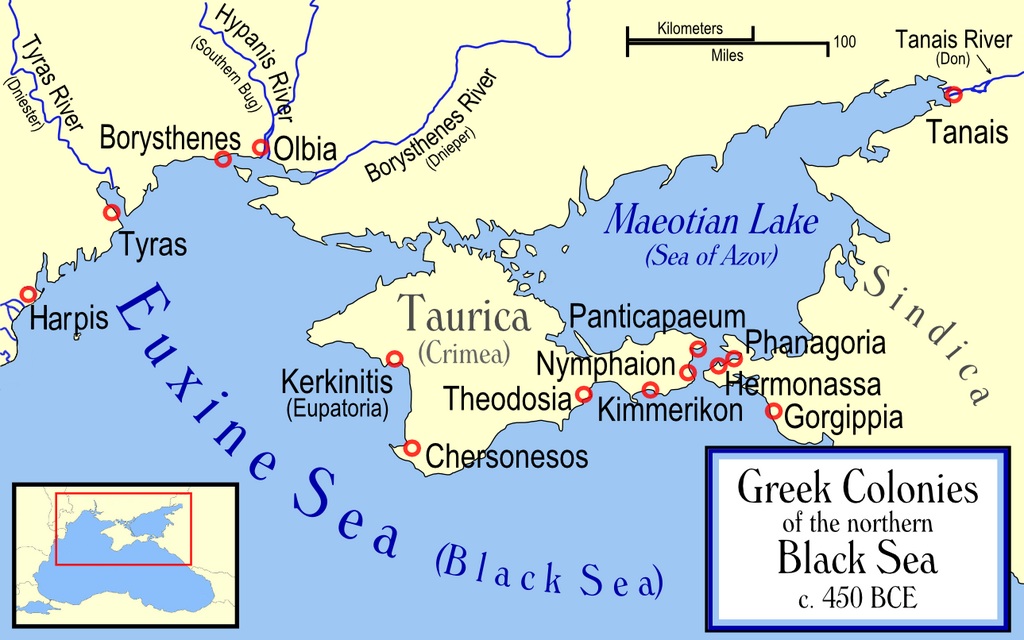
Fig. 4: Greek colonies in the northern Black Sea region (Source)
‘Assuming’ a crew of 200 men per trireme, a fleet of 80 ships would require 16,000 men as crew. Roebuck estimated that they would represent 25% of the total population of the city and then calculated its overall population of up to 64,000 (in 494 BC) (Roebuck (1959) in Greaves (2007)). If indeed Miletos could man 100 ships and using the same logic used by Roebuck, Miletos’ population ‘could’ have been 80,000 people. These estimations take no consideration of any mercenaries who may have fought for Miletos. Before they sent out colonies in the 7th century BC, Miletos may have had a larger population.
Milesian Philosophers and Scientists
The earliest known Greek philosophers/scientists lived in Miletos in the 6th century BC. They were the first to abandon supernatural or religious explanations for natural phenomena and seek physical causes. The earliest Milesian philosopher, Thales (624–549 BC) was able to predict a lunar eclipse and the solstices. He believed that the single origin of matter was water (as it could be transferred into a gas and a solid form) and that the earth was flat and floated on water. In contrast, his fellow Milesian, Anaximander (610–547 BC), called the original principle ‘the boundless’, or ‘the indefinite’, this limitless entity contained all matter. He was the first Greek to draw a geographical map. Anaximenes (586–528 BC) thought that everything had evolved from air: it became fire when it was rarefied, could change to wind and cloud and when condensed, was transformed into solid substances. He believed that the earth was flat but it floated on air (Pomeroy et al. 2018:143).
Hippodamus (c.500–440 BC) from Miletos is credited with the invention of the grid-plan system in planning towns. The Hippodamian system was applied in Piraeus (Greece) and Thurioi (Italy) and was generalised in the planning of new cities in the Hellenistic years (turkisharchaeonews.net/site/miletus).
Hecataeus (c.560–480 BC) was the author of Genealogiai, a review of Greek mythology and Ges Periodos, a sailing guide to the ports of the eastern Mediterranean. Another Milesian of note was Isidore, an architect, physicist and mathematician who in the 6th century AD, together with Anthemius of Tralles, designed the famous Hagia Sophia Church in Constantinople (turkisharchaeonews.net/site/miletus).
Hellenistic Miletos (323–129 BC)
In 323 BC, when Alexander the Great died, Miletos came under the control of the governor of Caria. In 312 BC, Antigonus I [a General under Alexander]1 restored democracy in Miletos. Soon after 295 BC, Lysimachus [a General under Alexander who governed Thrace] must have assumed power in the region until 281 BC, when he was defeated by Seleucus [an army officer under Alexander, who founded the Seleucid kingdom]. In 246–245 BC, Miletos came under Ptolemy III of Egypt. Then in 201 BC, Philip V of Macedonia captured Miletos (www.fhw.gr/choros/miletus).
Apart from the exceptional pottery, the city was famous in antiquity for producing textiles and purple dye. This reputation continued until the Hellenistic and Roman period (www.fhw.gr).
Roman Miletos (129 BC–4th century AD)
From 129 BC, Miletos was ruled by the Romans (Liebeschuetz 2006). In 83 BC, during the Second Mithradatic War (between the Roman empire and Mithradates VI, king of Pontos), Miletos sent 10 ships to support the Romans (www.fhw.gr/). (See Topalidis (2024) on Mithradates VI.)
In the early phase of Roman administration in Anatolia, a system of oligarchy was restored in Miletos. The history of Miletos in the early centuries of the Roman empire is largely unknown, but Miletos must have been less important than Pergamum, Ephesus, Smyrna and Sardis (Fig. 1) (www.ehw.gr/asiaminor/Forms/fLemmaBody.aspx?lemmaid=8177). Nevertheless, Miletos retained its commercial importance during the reign of the Roman emperors Augustus (31 BC–14 AD) and Trajan (98–117 AD) (www.britannica.com/place/Miletus).
In 164 AD, Faustina, wife of Roman emperor Marcus Aurelius, visited Miletos and donated money for the construction of the baths which were named after her (Fig. 3) and the completion of the Roman theatre (Plate 1). The theatre was originally built in the 4th century BC for 5,300 spectators and then enlarged in the Hellenistic period (www.ehw.gr/asiaminor/Forms/fLemmaBody.aspx?lemmaid=8177). The Roman baths at Humeitepe were also erected between the middle of the 1st and the 2nd century (Plate 2) in the northern section of the complex while the northernmost tip of Humeitepe was occupied by the Temple of Demeter (turkisharchaeonews.net/site/miletus).

Plate 1: The Roman theatre at Miletos (Source)

Plate 2: Ruined Roman Humeitepe Baths at Miletos (Source)
Eastern Roman (Byzantine) Empire Period (4th–11th century)
Under Eastern Roman emperor Justinian (reign 527–565), a new cathedral was built in Miletos, the baths were restored and the harbour was dredged (Liebeschuetz 2006).
The late Byzantine chapel of Hagia Paraskevi was erected to the north-east of the stadium. Further to the north, there is a complex of Byzantine buildings, consisting of the Church of St Michael and the bishop's palace (Plate 3, Fig. 3). They were erected on the remains of the 3rd century BC Dionysus Temple. At the beginning of the 7th century AD, the Church of St Michael was replaced with a basilica. Two other basilicas in Byzantine Miletos have been discovered: the so-called Large Church in the city centre and a huge basilica in the cemetery next to the Kalabaktepe (turkisharchaeonews.net/site/miletus).

Plate 3: Ruined church of St Michael and the bishop's palace of Miletos (Source)
From the 7th to the 9th century, Miletos was apparently abandoned. The reasons are not clear, it could have been the consequence of the Arab raids. But the surrounding countryside continued to prosper (turkisharchaeonews.net/site/miletus).
The disappearance of Byzantine Miletos is suggested sometime before late 11th century. Evidence points to the countryside flourishing in the 10th and 11th centuries and prosperity was only reversed by the Turkish conquest. The arrival of the Turks led to the building of new fortifications, a great number of them were put up in rural locations (Niewöhner 2016:71, 76–77).
By the late 11th century, a new settlement was built on Kaletepe. There was a citadel on top of Theatre Hill. This new town was called Palatia. Upon the arrival of the Turks, the late Byzantine city was founded anew on the fortified Theatre Hill (Caner Yüksel 2019:355).
Examples of Coinage
Miletos was among the first Greek cities that used electrum (an alloy of gold and silver) coins. The first series of Miletos coins is a group of 6th century BC electrum issues (Plate 4). The larger denominations feature a lion (https://rjohara.net/coins/).
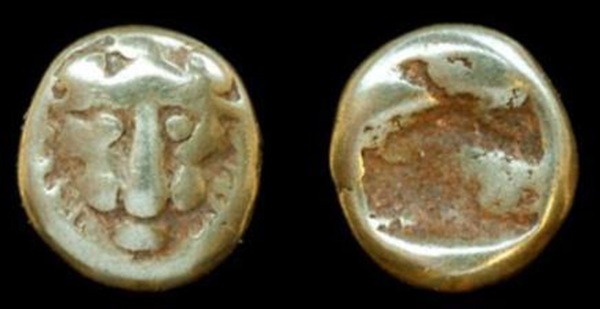
Plate 4: Miletos electrum coin, 6th century BC (Source)
A coin type was adopted in the 4th century BC with the head of Apollo (the city’s patron deity) in profile appearing on the obverse, while a lion turning its head back appeared on the reverse (Plate 5). Between 353 and 333 BC, Miletos minted silver coins and bronze coins depicting the lion on the front and a rose on the back. Between 333 and 313 BC there were many coins minted according to the type of Alexander the Great. In 290–281 BC, two-drachma silver coins were produced while in the 259–246 BC, the so-called Persian system (two-drachma coins) was adopted (www.fhw.gr/choros/miletus).
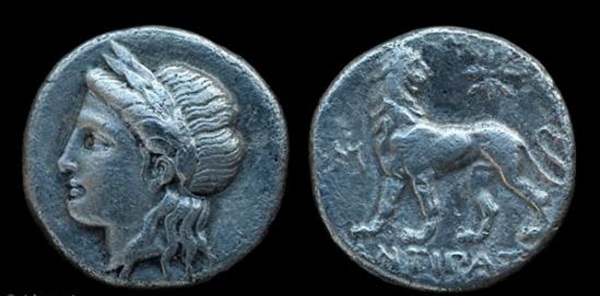
Plate 5: Apollo and lion on Miletos coins 4th century BC (Source)
Ottoman Turk silver akçes of sultan Mehmed I were struck in early 15th century (Plate 6). These coins were probably the final issues from Balat (rjohara.net/coins/).

Plate 6: Ottoman Turk silver Akçes from Balat (Miletos), 1413 (Source)
Seljuk and Ottoman Turk Period to Today
In the 13th century, Balat, as the Seljuk settlement at ancient Miletos was called, served as the trading port for the Seljuk emirate of Menteşe (Niewöhner 2016).
In 1404, they erected the İlyas Bey Mosque to the south of the south Agora (turkisharchaeonews.net/site/miletus). From 1425, Balat became part of the Ottoman Turk empire. It declined in the 16th/17th centuries due to the Maeander delta silting up (Brückner et al. 2014). In the 16th century, the settlement probably still had around 3,500 inhabitants (www.miletgrabung.uni-hamburg.de/en/milet/milet-geschichte.html).
Evliya Çelebi visited Balat in 1670 and witnessed ships loading wheat, barley, cotton and liquorice plant. There were still some 200 houses. In 1675, Balat was no more than a confused heap with walls with some shepherd’s huts. Then in 1764, Chandler described it as, ‘a very mean place … the whole site of the town, to a great extent, is spread with rubbish and overrun with thickets’ (Meinardus 1973:293–294). From that period there is a lack of information on Balat.
After a catastrophic earthquake in 1955 [magnitude 6.8], the settlement ended up as a village relocated some 3 km to the south and named Yeni Balat (Brückner et al. 2014). Today, Yeni Balat is a village with a handful of small businesses. Many of its over 1,000 inhabitants work in the area’s olive groves, fields and gardens or lead their herds of sheep or cattle (www.miletgrabung.uni-hamburg.de/en/milet/milet-geschichte.html).
Conclusion
The now deserted site of ancient Miletos had a very rich history. It is well-known for helping to establish up to 50 Greek colonies around the Black Sea, including Pontos. It was a prosperous Greek settlement, which was also famous for its Greek philosophers and scientists. It had indigenous Anatolians with Minoan, Mycenaean, other mainland Greeks, Romans, Eastern Romans (Byzantines), Seljuk Turks and Ottoman Turks. It suffered after its harbours were silted over in the 17th century. It was finally abandoned in 1955 after an earthquake and relocated nearby to become the village of Yeni Balat.
Notes
Note 1
Mycenaean society came to an end by c.1050 BC at the latest (Cline 2023:175).
Note 2: Sea Peoples
Records from the reign of Egyptian pharaoh Ramesses III (1184–1163 BC) tell us that large groups of peoples coming from across the sea swept through many parts of the Near East world, from Anatolia to Cyprus and across much of Syria and Palestine, leaving a trail of devastation in their wake before they were repulsed in Canaan and on the Egyptian coast by the pharaoh’s forces. The movement of these so-called Sea Peoples were not only military operations but involved masses of people seeking new lands to settle. Very likely many of them had been displaced from their original lands, perhaps in western Anatolia as well as elsewhere, in the widespread upheavals associated with the end of the late Bronze Age (Bryce 2023:260–261).
Acknowledgements
I thank the late Professor Gocha Tsetskhladze for sending me some of his difficult to access early articles. I also warmly thank Michael Bennett and Russell McCaskie and especially Professor Manolis Manoledakis from Thessaloniki for their comments to an earlier draft. All errors remain with me.
1. Words with square brackets ‘[ ]’ within a reference are the author’s words.
References
Arrian The campaigns of Alexander, (2nd century, translated by A de Sélincourt, 1971), Penguin Classics, London.
Avram A, Hind J and Tsetskhladze G (2004) ‘The Black Sea area’,:924–973, in Hansen MH and Nielsen TH (eds), An inventory of archaic and classical poleis: an investigation conducted by the Copenhagen Polis Centre for the Danish National Research Foundation, Oxford University Press, Oxford.
Brückner H, Herda A, Müllenhoff M, Rabbel W and Stümpel H (2014) ‘On the Lion harbour and other harbours in Miletos: recent historical, archaeological, sedimentological, and geophysical research’,:49–103, in Frederiksen R and Handberg S (eds), Proceedings of the Danish Institute at Athens VII, Aarhus University Press, Aarhus, Denmark.
Bryce T (2023) Warriors of Anatolia: a concise history of the Hittites, Bloomsbury Academic, London.
Caner Yüksel C (2019) ‘A tale of two port cities: Ayasuluk (Ephesus) and Balat (Miletus) during the Beyliks period’, Al-Masāq: Journal of the Medieval Mediterranean, 31(3):338–365.
Cline EH (2023) After 1177 B.C.: the survival of civilizations, Princeton University Press, Princeton, New Jersey.
Greaves A (2007) ‘Milesians in the Black Sea: trade, settlement and religion’,:9–21, in Gabrielsen V and Lund J (eds), The Black Sea in antiquity: regional and interregional economic exchanges, Aarhus University Press, Aarhus, Denmark.
Liebeschuetz JHWG (2006) ‘Miletus’, Encyclopedia of ancient Greece, Routledge, New York.
Lordkipanidze O (2002) ‘The Greeks in Colchis’, in Koromila (ed) (2002):288–305, The Greeks and the Black Sea: from the Bronze Age to the early 20th century, new edn (translated into English by Doumas A and Fowden EK), The Panorama Cultural Society, Athens.
Manoledakis M (2018) ‘The early Greek presence in the southern Black Sea’,:173–241, in Manoledakis M, Tsetskhladze GR and Xydopoulos I (eds), Essays on the archaeological and ancient history of the Black Sea littoral, Peeters, Leuven, Belgium.
Manoledakis M (2021) ‘The districts of the southern Black Sea littoral in the era of Alexander the Great’,:629–649, in Ancient Macedonia VIII: Macedonia from the death of Philip II to Augustus’ rise to power, Institute for Balkan Studies, Thessaloniki, Greece.
Manoledakis M (2022) An approach to the historical geography of the southern Black Sea littoral (first millennium BC), Colloquia Antiqua, 36, Peeters, Leuven, Belgium.
Meinardus OFA (1973) ‘Testimonies to the economic vitality of Balat, the medieval Miletus’, Belleten, 37(147):289–296.
Muratov M (2015) ‘The northern Black Sea: the case of the Bosporan kingdom’,:589–604, in Eidinow E and Kindt J (eds), The Oxford handbook of ancient Greek religion, Oxford University Press, Oxford, England.
Niewöhner P (2016) ‘The end of the Byzantine city in Anatolia: the case of Miletus’,:63–77, in Gruber E, Popović M, Scheutz M and Weigl H (eds) Städte im lateinischen westen und im griechischen osten zwischen spätantike und früher neuzeit: topographie – recht – religion, Böhlau Verlag, Vienna.
Petropoulos EK (2021) ‘Colonisation and landscape transformation: cross-cultural interactions in the Cimmerian Bosporus region’, :281–302, in Braund D, Stolba VF and Peter U (eds), Environment and Habitation around the ancient Black Sea, De Gruyter, Berlin.
Pomeroy SB, Burstein SM, Donlan W, Tolbert Roberts J, Tandy DW and Tsouvala G (2018) Ancient Greece: a political, social, and cultural history, 4th edn, Oxford University Press, New York.
Roller DW (2020) Empire of the Black Sea: the rise and fall of the Mithridatic world, Oxford University Press, New York.
Sherratt S (2022) ‘The Mediterranean and the Black Sea in the early first millennium BCE: Greeks, Phoenicians, Phrygians, and Lydians’,:124–141, in Hall JM and Osborne JF (eds), The connected iron age: intergenerational networks in the eastern Mediterranean, 900–600 BCE, The University of Chicago Press, Chicago.
Solovyov S (2019) ‘Borysthenes and Olbia: reflections on the character of contacts between Greeks and natives during the initial stage colonization’,:149–182, in Lucas J, Murray CM and Owen S (eds), Greek colonization in local contexts: case studies on colonial interactions, Proceedings of the 2007 Conference University of Cambridge, Museum of Classical Archaeology 4, Oxbow Books, Oxford, England.
Topalidis S (2024) ‘Mithradates VI, king of Pontos: murderer or liberator or both?’ at: www.pontosworld.com/index.php/history/sam-topalidis/896-mithradates-vi-king-of-pontos
Tsetskhladze GR (2006) ‘Introduction: revisiting ancient Greek colonisation’,:xxiii-lxxxiii, in Tsetskhladze GR (ed), Greek colonisation: an account of Greek colonies and other settlements overseas, 1, Brill, Leiden, Netherlands.
Tsetskhladze GR (2009a) ‘Secondary colonisers in the Black Sea: Sinope and Panticapaeum’, in Lombardo M and Frisone F (eds) Colonie di colonie: le fondazioni sub-coloniali greche tra colonizzazione e colonialism (Atti del Convgno Lecce), 22–26 June 2006) University of Salento, Department of Cultural Heritage, 16, Galantina,:229–254.
Tsetskhladze GR (2009b) ‘The Black Sea’,:330–346, in Raaflaub KA and Van Wees H (eds), A companion to archaic Greece, Blackwell Publishing, Massachusetts, USA.
Tsetskhladze GR (2015) ‘Greeks, locals and others around the Black Sea and its hinterland: recent developments’,:11–42, in Tsetskhladze GR, Avram A and Hargrave J (eds), The Danubian lands between the Black, Aegean and Adriatic Seas: (7th century BC–10th century AD), Proceedings of the fifth international conference on Black Sea antiquities, Belgrade, 17–21 September 2013, Archaeopress Publishing, Oxford, England.
Tsetskhladze GR (2019) ‘Once again about the establishment date of some Greek colonies around the Black Sea’,:1–41, in Tsetskhladze GR and Atasoy S (eds), Settlements and necropoleis of the Black Sea and its hinterland in antiquity, Third International Conference ‘The Black Sea in antiquity and Tekkeköy: an ancient settlement on the southern Black Sea coast’, 27–29 October 2017, Samsun, Turkey, Archaeopress Archaeology, Oxford, England.
Zachariadou EA (1979) ‘Trebizond and the Turks (1352–1402)’, Twelfth Spring Symposium of Byzantine Studies: The Byzantine Black Sea, Birmingham England, 18–20 March 1978, Archeion Pontou [Archives of Pontos], 35:333–358.